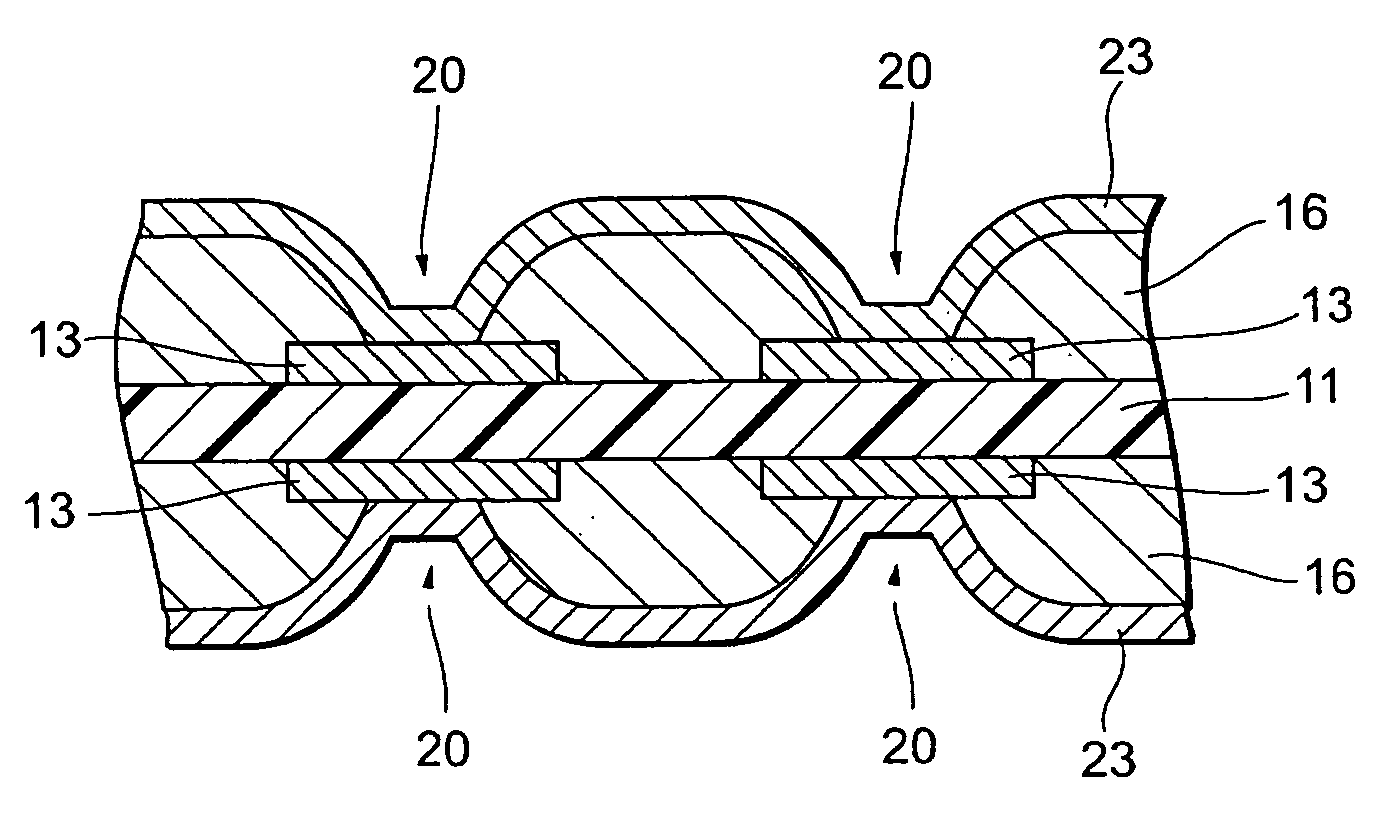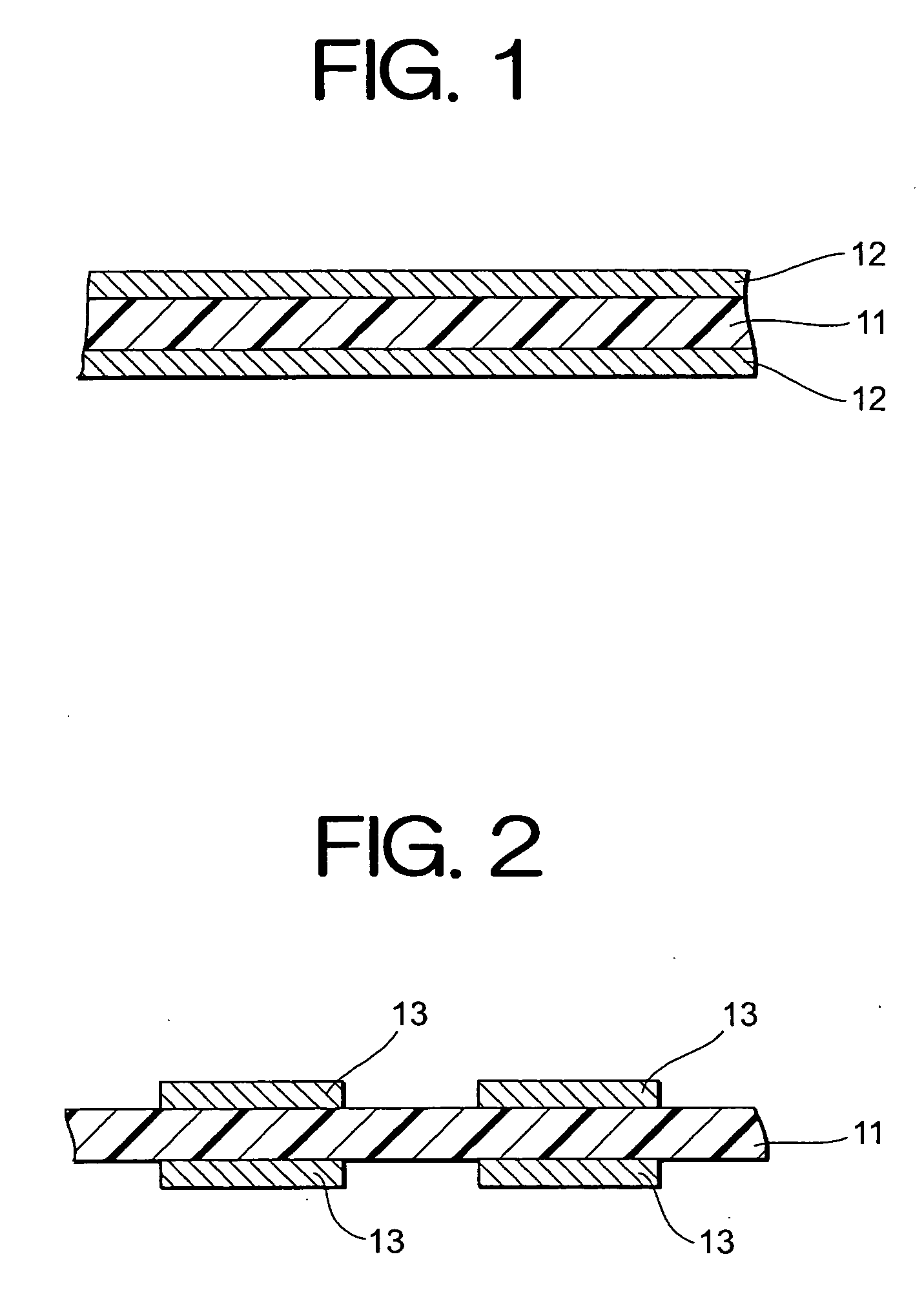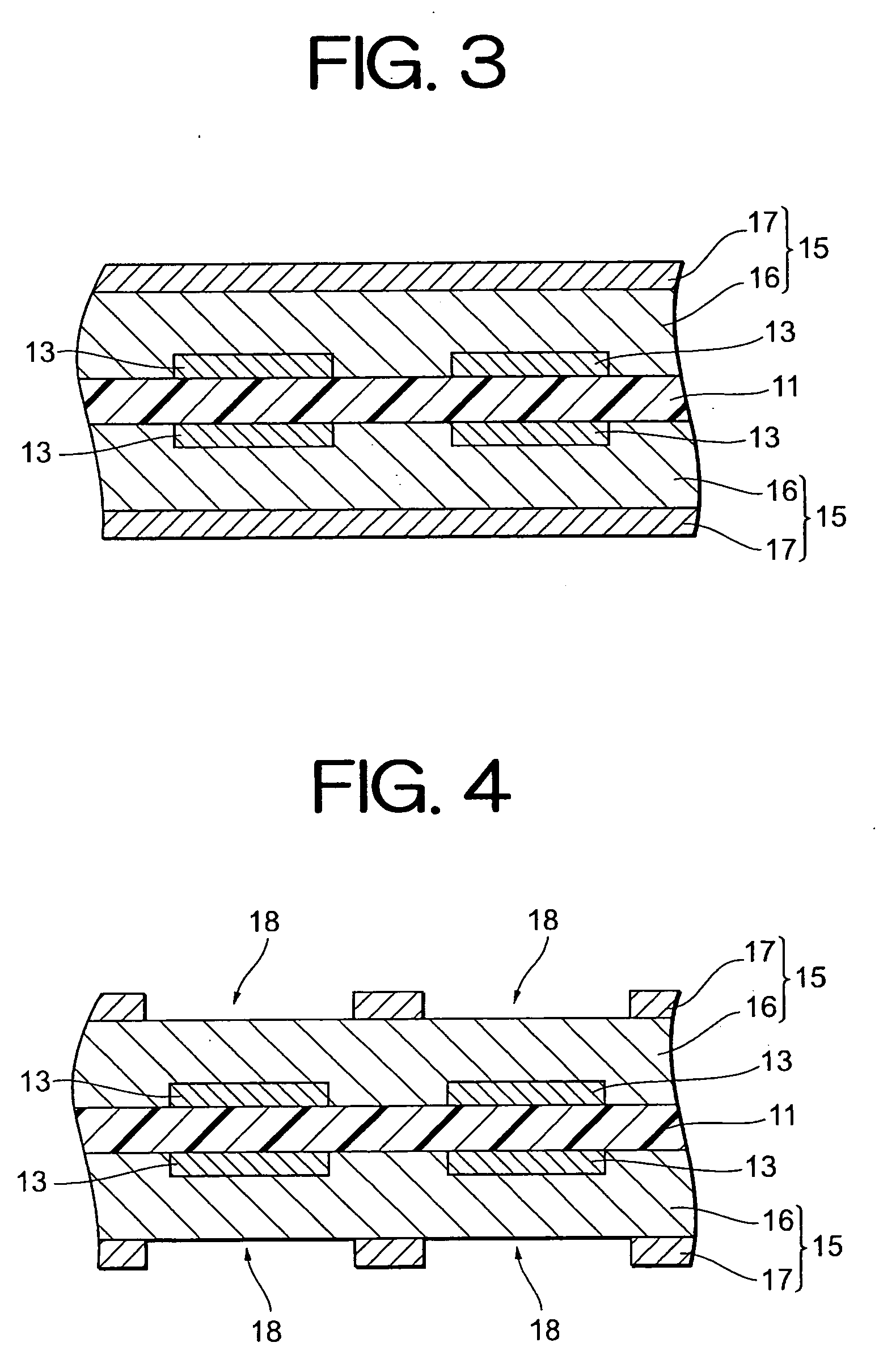Printed wiring board and manufacturing method therefor
a manufacturing method and technology of printed wiring board, applied in the direction of manufacturing tools, non-printed masks, etching metal masks, etc., can solve the problems of lowering the reliability of connection, and affecting the reliability of plating failure in the via, so as to enhance the reliability of the connection, enhance the reliability of the product, and the effect of high density packaging
- Summary
- Abstract
- Description
- Claims
- Application Information
AI Technical Summary
Benefits of technology
Problems solved by technology
Method used
Image
Examples
Embodiment Construction
[0041]Embodiments according to the present invention will now be described below with reference to the drawings. In the drawings, the same reference numerals will be put on the same elements, and overlapping descriptions will be omitted. A positional relation such as up, down, left and right may be based on the positional relation as is illustrated in the drawings, unless otherwise specifically indicated. A dimensional ratio in the drawings is not limited to the shown ratio. The following embodiments are illustrated for describing the present invention, and the present invention is not limited to the embodiments. Furthermore, the present invention can be modified in various ways insofar as they do not deviate from the scope of the invention.
[0042]FIG. 1 to FIG. 8 are process drawings (flow chart) for showing steps of manufacturing preferred one embodiment of a printed wiring board according to the present invention, which are schematic sectional views for illustrating an essential p...
PUM
| Property | Measurement | Unit |
|---|---|---|
| Fraction | aaaaa | aaaaa |
| Angle | aaaaa | aaaaa |
| Size | aaaaa | aaaaa |
Abstract
Description
Claims
Application Information
 Login to View More
Login to View More - R&D
- Intellectual Property
- Life Sciences
- Materials
- Tech Scout
- Unparalleled Data Quality
- Higher Quality Content
- 60% Fewer Hallucinations
Browse by: Latest US Patents, China's latest patents, Technical Efficacy Thesaurus, Application Domain, Technology Topic, Popular Technical Reports.
© 2025 PatSnap. All rights reserved.Legal|Privacy policy|Modern Slavery Act Transparency Statement|Sitemap|About US| Contact US: help@patsnap.com



